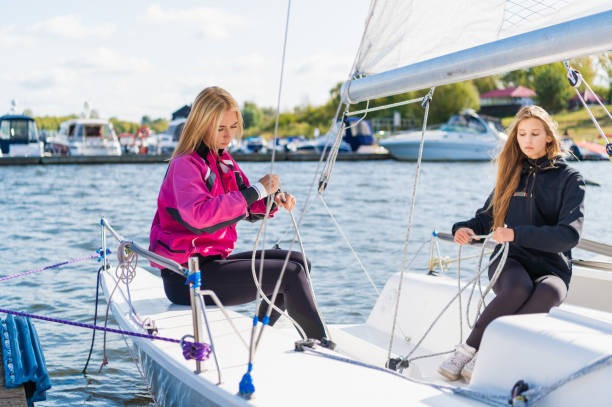Have you ever wondered what it feels like to take control of a sailboat and glide across the water? If so, enrolling in a basic keelboat sailing course might be the perfect first step. Whether you’re looking for a new hobby, a way to connect with nature, or a skill that brings confidence, sailing offers all that and more. This course is designed for beginners and introduces the essentials in a hands-on, easy-to-learn format. It is a complete, all-round course to help you understand all the main aspects of sailing.
From safety drills to sail trimming, here’s everything you can expect from a basic keelboat sailing course. Let’s get into this.
Getting Comfortable on the Water
When the keelboat sailing course starts, most students will first notice how different it feels to be on a sailboat compared to being on land. The boat may rock gently, and you’ll quickly learn how to balance your body and move with the boat. Instructors typically begin by introducing the various parts of the boat, outlining basic safety rules, and demonstrating how to wear a life jacket correctly. Don’t worry if it feels unfamiliar at first; it gets easier with each sail, and confidence builds naturally as you practice.
Learning the Language of Sailing
Sailing has its own terms and lingo, but you don’t have to memorize everything on day one. During the course, you’ll be introduced to terms like “port,” “starboard,” “tacking,” and “jibing.” Instructors use simple examples and hands-on practice to help students understand and remember these basics. Once you’re familiar with these terms, communication with your instructor and fellow crew becomes much smoother, making every part of the sailing process more enjoyable.
Hands-On Practice with Real Skills
A highlight of any basic sailing course is the chance to actually sail. You won’t be stuck in a classroom the whole time. Most of your lessons happen right on the water, where you’ll take turns steering the boat, adjusting sails, and learning how to control speed and direction. A study by the American Sailing Association revealed a sharp increase in interest in sailing lessons, driven by the desire for outdoor, low-contact activities, indicating that this timeless sport continues to appeal to people of all ages.
Teamwork Makes a Big Difference
Sailing is often a team effort. While it’s possible to sail solo, the course usually involves working together with others on the boat. Each person has a role, whether it’s steering, managing the lines, or keeping an eye on the wind direction. This teamwork builds trust and improves communication, both on and off the water. Many first-time sailors say they enjoy the camaraderie just as much as the sailing itself, making it a fun way to meet like-minded people.
What You’ll Take Away at the End
By the end of the course, most students are amazed by how much they’ve learned. You’ll understand basic sailing techniques, know how to rig and de-rig a boat, and feel confident handling simple maneuvers on your own. More importantly, you’ll gain the kind of hands-on experience that turns curiosity into passion. Whether you plan to rent boats, join a club, or move on to more advanced training, your entry-level keelboat course will have set a strong foundation.
Conclusion
Stepping onto a sailboat for the first time can feel exciting and a little intimidating, but that’s exactly what makes learning so rewarding. An introductory keelboat sailing course gives beginners the tools and experience they need to sail with confidence, combining classroom instruction with practical on-the-water learning. With expert guidance, a supportive environment, and real-world practice, students come away ready to chart their next adventure. It’s not just about learning to sail—it’s about discovering a new skill that opens the door to freedom, fun, and exploration on the open water.



